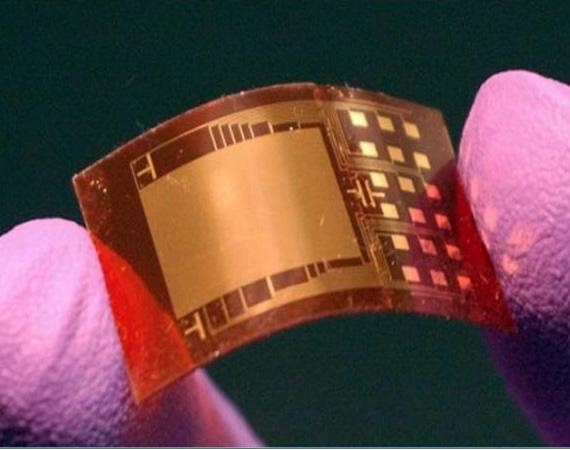Whether on television, the big screen, or in a book, science fiction is known for its bewildering array of handheld gadgets. Besides the many amazing functions these devices possess they also seem to simply keep running forever. After all, when was the last time you saw someone on Star Trek change the battery in their Tricorder?
Cell phones, watches, portable computers, MP3 players, and many other portable electronic devices are becoming more and more common, and with new advancements like the Google Glass on the horizon this trend is certain to continue. All of these gadgets are limited by their power supply, and so the search for ways to make their charge last longer has been going on for some time. A lot of the focus has been on improving batteries by increasing their storage capacity and charging speed, but new advancements might lead to a new generation of portable devices that will never need to be charged, and whose owners will never have to worry about them running out of power. The plan is to fulfill this dream by creating devices that are capable of charging themselves while in use, eliminating charging stations forever.
The technology that can make these self-charging devices possible is called the nanogenerator, which uses a combination of nanotechnology (which I have discussed in several previous articles) and piezoelectric components to a device to generate its own electricity completely independent of another power source. These amazing generators are built from zinc oxide nanowires or dots, which create an electrical charge when stressed. These are then placed on a piece of a polymer material that is also piezoelectric, allowing each nanogenerator to produce electricity from even the smallest movements or vibrations. Each one of these generators is tiny, roughly a quarter the size of a postage stamp, and as few as five of them stacked together can provide the same amount of energy as a pair of AA batteries. Nanogenerators convert vibrations, such as those of being carried, moved, or even breathed on, into electricity. This makes them perfect for watches, cellular phones, and other devices that are regularly carried around, but they would also be very useful in other electronics that are frequently moved while they are in use. Computer mice, TV remotes, and headphones could all make use of this technology as well, and that is only the tip of the iceberg.
Although astounding strides have been made in regards to nanogenerators the designers insist that they can be made even more efficient, even going so far as to say that future nanogenerators will be so sensitive to vibration that they will even be able to generate power from a human heartbeat, which will allow them to easily and safely power pacemakers and other implanted devices. On a larger scale it could one day be possible to power laptop computers through the vibration of the user typing, and massive arrays of nanogenerators could be used to replace current wind and hydroelectric power generators, as well as being used as a way to make vehicles more efficient. The sky is truly the limit for this technology, and new applications will continue to be found.
Besides the many possible uses of this fascinating technology, nanogenerators have many other advantages compared to conventional batteries. Their ability to actively recharge the device they are mounted in means that they will last many times longer, and they are much lighter and more flexible than batteries. Another huge advantage is that the use of nanogenerators produces no waste or pollution, so this can be considered a truly green energy source. Nanogenerators were also remarkably efficient but recent advances are making them even more so, with newer versions being 40 times more efficient that earlier models.
The only limitation that has kept nanogenerators from making their way into daily use was the difficulty and expense in producing them, but these issues are now being resolved. New manufacturing techniques and materials are drastically decreasing the difficulty and cost of creating these astounding devices, and some researchers have even been able to genetically modify harmless viruses to produce the peizoelectric components needed to produce nanogenerators. Decreasing the cost and difficulty of creating these gadgets will allow them to make their way into the marketplace, and they are sure to usher in a new greener, more energy efficient future for everyone.

